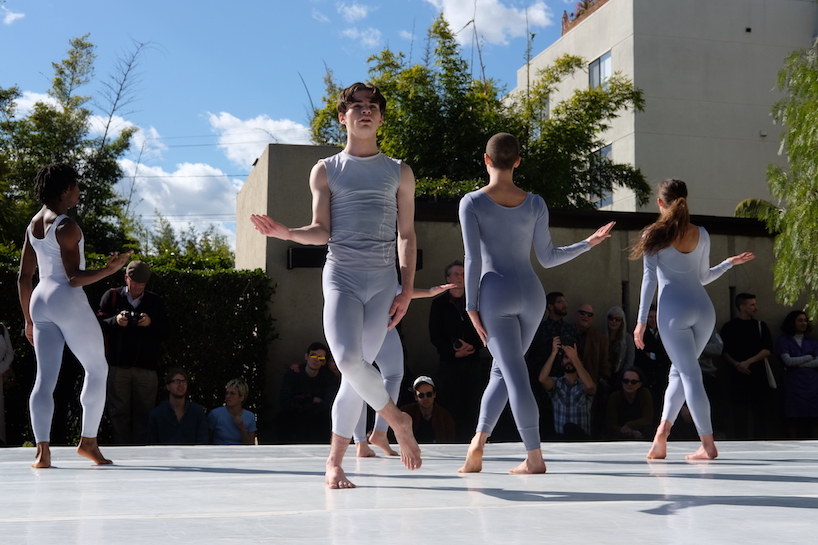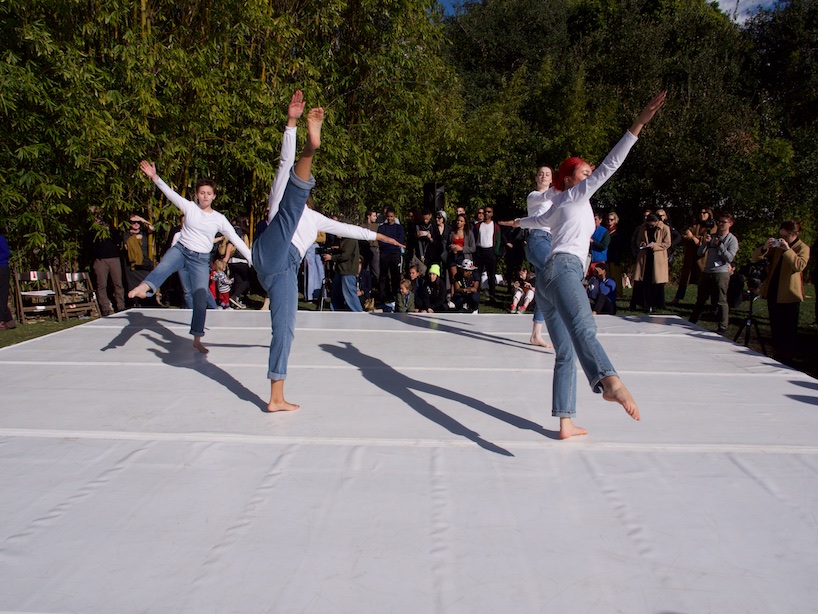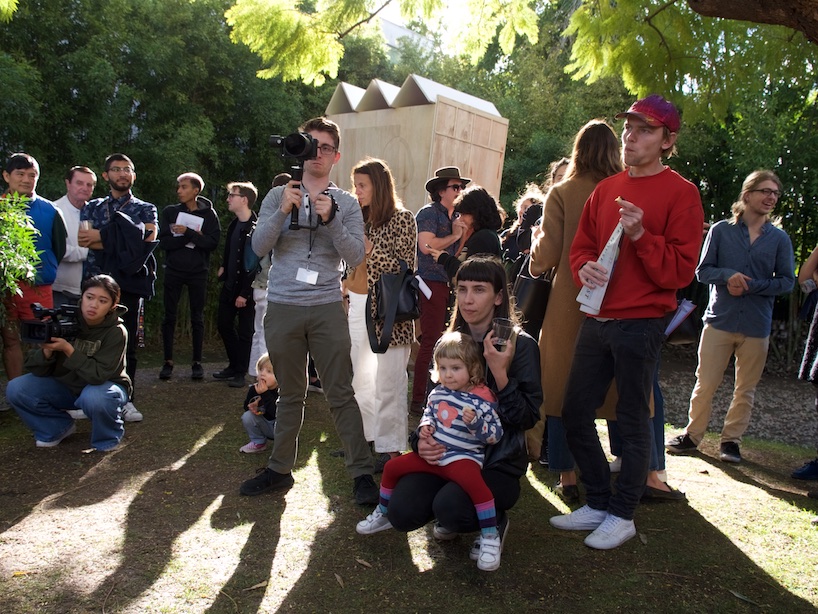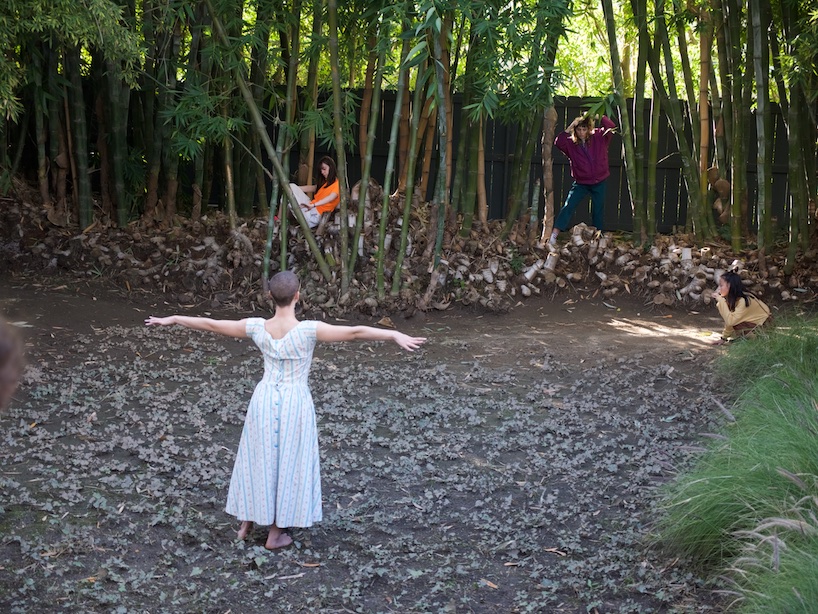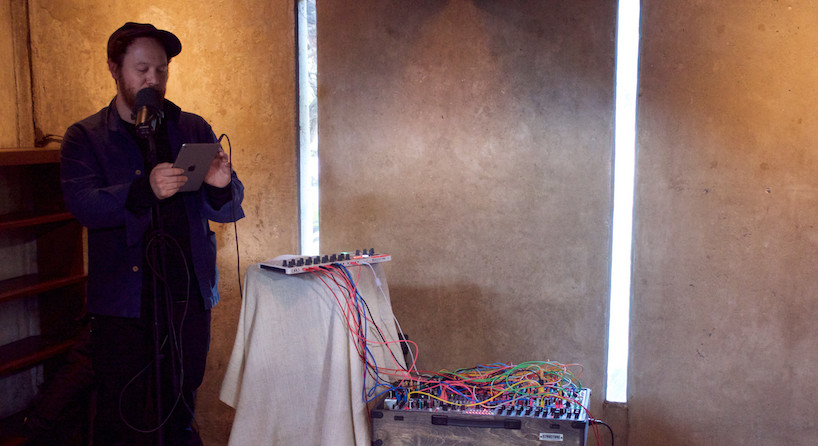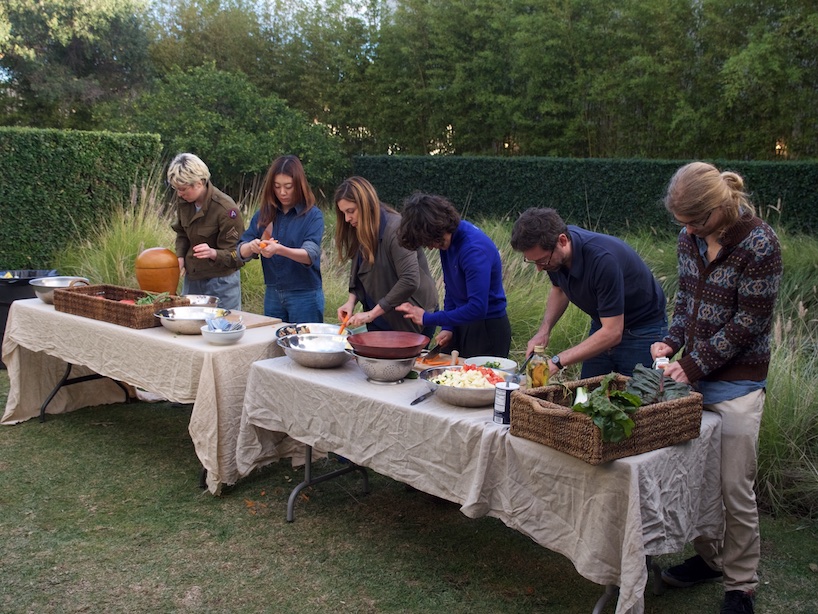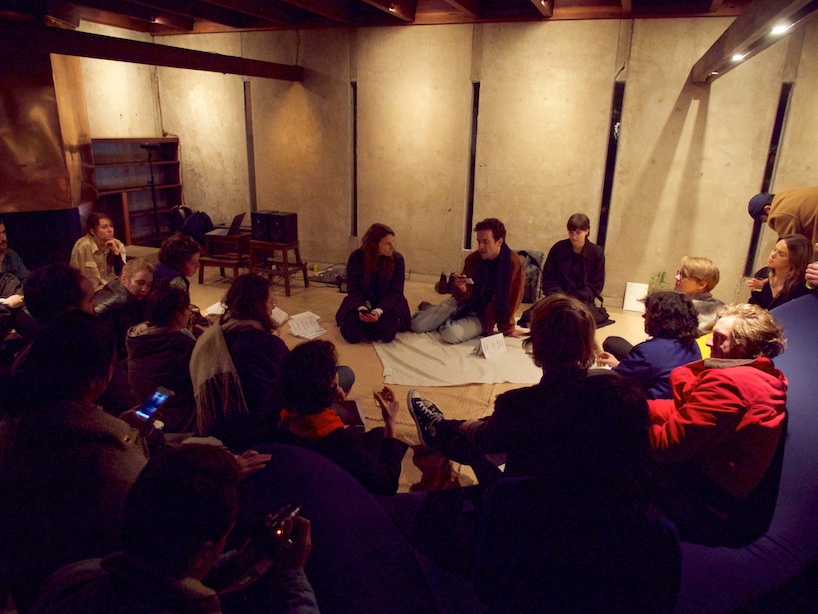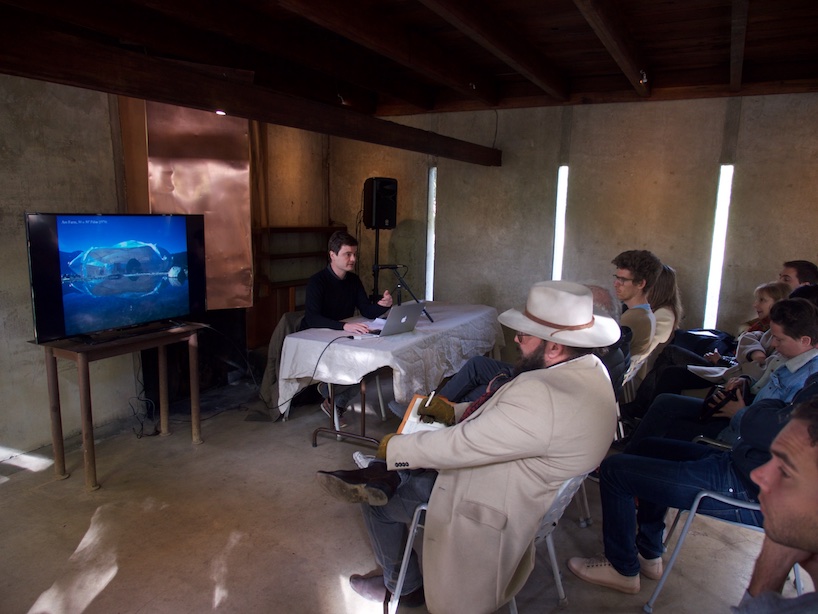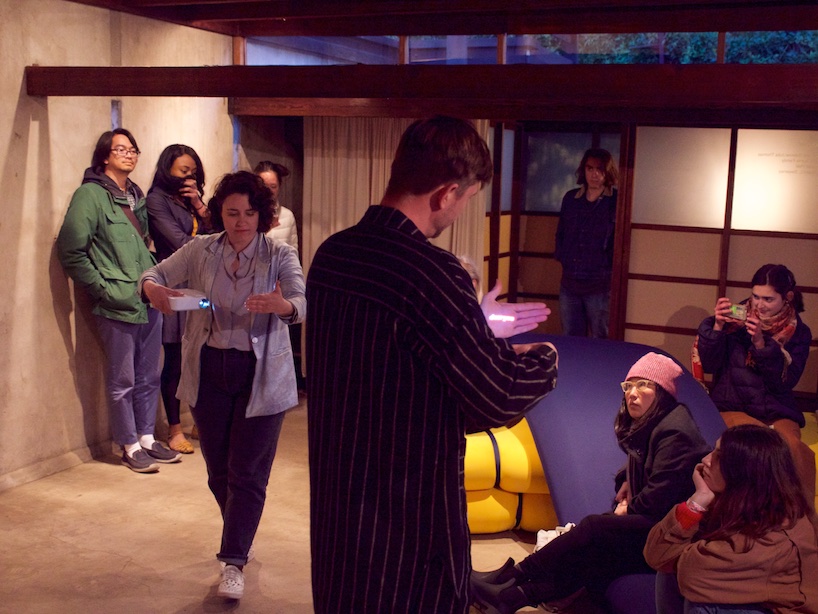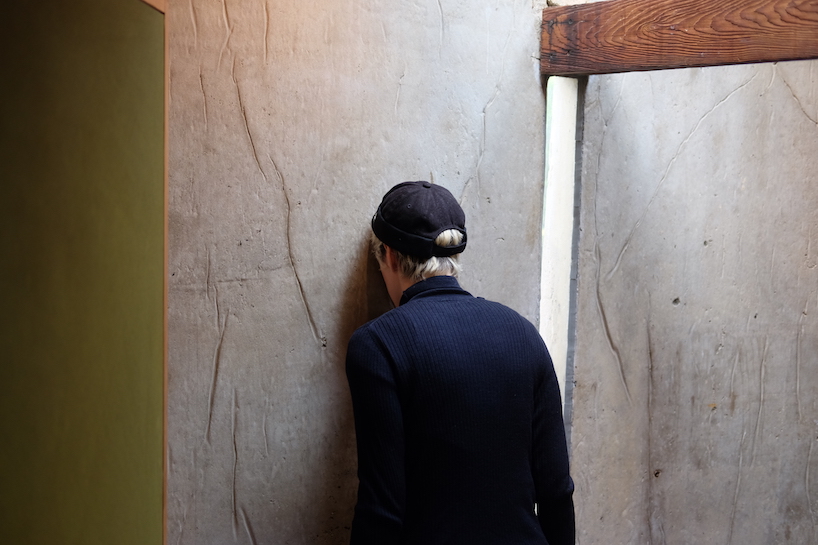Shelter or Playground - Two days of performances and conferences
MAK Center for Art and Architecture
February 16 and 17, 2019
Saturday, February 16
2pm – Merce Cunningham, Canfield, 1969, performed by CalArts Dance.
The dance’s title refers to a game of solitaire that Cunningham played while on vacation. Using chance process to determine the sequence of movements, Cunningham assigned a word indicating a particular motion to each card in the deck, with red and black suits denoting fast and slow movements respectively. Pauline Oliveros composed the score, and Robert Morris designed the set, which featured a gray vertical beam, moving back and forth across the front of the stage. A light at the back of the beam shone onto the backcloth, intensifying the illumination when a dancer moved past.
2:15pm – Alison Knowles, #15 Wounded furniture, 1965, interpreted by CalArts students.
Premiered July 19th, 65 at Cafe au Go Go, New York.
This piece uses an old piece of furniture in bad shape. Destroy it further, if you like.
Bandage it up with gauze and adhesive.
Spray red paint on the wounded joints.
Effective lighting helps.
This activity may be performed with one or more performers, and simultaneously with other events.
3pm – Trisha Brown, Solo Olos, 1976, performed by CalArts Dance.
A founder member of the Judson Church Theater, at the heart of which she explored the whole spectrum of combinatory elements in dance, Trisha Brown and her company took dance to its most abstract form, stripped of all artifice. Solos Olos sees the transformation of a solo into a piece for 5 dancers via the multiplication of lines and their resonances. Using supports, lifts, immobility and sudden changes of direction, its sparse nature coincides perfectly with Trisha Brown’s lifelong search for “pure movement”. “A natural progression of non-functional movement. By natural progression I mean that movement B is the simplest most obvious next move after A; C after B. At the halfway mark of this piece, a retrograde is initiated.” - Trisha Brown, Trisha Brown: Dance and Art in Dialogue, 1961-2001, Teicher, Hendel
3:20pm – Dimitri Chamblas, SLOW SHOW, 2018. Music and sound by Eddie Ruscha
Dimitri Chamblas develops this piece for 22 dancers and a musician, focusing on images and concepts such as telepathy, fantasy, erased memories mobilised by the mind. In a traditional dance process, interiority is only the beginning of the development of movements. It becomes the territory and aim of this piece. Slow Show is an intense and agitated dance whose repercussions are not spectacular, almost not visible, because everything happens inside the bodies. The invisible is not emptiness nor calm or absence. The subtilty of the movements doesn’t take away the intensity nor the exhaustion growing from a stretched time instead of a possible frenetic transe. The bodies are spread over the modernist architecture of the Schindler House becoming like ideas evolving within the house as a brain.
4pm – Jasmin Blasco, Speaking In Tongues, 2019
For Speaking in Tongues Jasmin Blasco recites a text over music. Continuing his exploration into how communication is mediated by contemporary technologies, the piece will provoke an encounter between embodied and disembodied voices.
4:30pm – Alison Knowles, Variation #1 on Proposition, Make a Soup, 1964 interpreted and performed by Art by Translation
Premiered in 1964 at Cafe au Go Go, New York.
Make a Soup.
5pm – Alvin Lucier, I Am Sitting in a Room, 1969, interpreted by Jasmin Blasco
I am sitting in a room the same as the one you are in now. I am recording the sound of my speaking voice and I am going to play it back into the room again and again until the resonant frequencies of the room reinforce themselves so that any semblance of my speech, with perhaps the exception of rhythm, is destroyed. What you will hear, then, are the natural resonant frequencies of the room articulated by speech. I regard this activity not so much as a demonstration of a physical fact, but more as a way to smooth out any irregularities my speech might have.
5:30pm – Dinner Make a Soup, Alison Knowles
6:30pm – Collective reading session by Slow Reading Club with a tea serving by Hannah Mjølsnes
Slow Reading Club is a semi-fictional reading group initiated by choreographer Bryana Fritz and artist Henry Andersen. They deal in constructed situations for collective or individual performed reading where “meaning” passes between choreographed bodies. SRC seeks to occupy and eroticise this space of transmission between text and reader, reader and reader, text and text. They want to dwell in the unstable space of reading itself. They want to intensify what Spivak calls “the possible menace of a space outside of language” that is opened in reading and in love. SRC produce collection of writings publication as a material for the collective reading. Each text is paired with a specific protocol that seeks to interrupt the surety of its reading - e.g. the public might be asked to read via a stroboscope, or while maintaining skin contact with a partner, or by reading aloud each line from the text twice. A number of technologies borrowed from club-culture are employed to ease the collective body into reading - late night, long duration, alcohol, honey-yellow lighting, a tea that makes the mouth go numb. SRC does not seek to understand the text, but to generate contact - skin over syntax, flesh refusing flesh.
Sunday, February 17
Throughout the day – Yoko Ono, TAPE PIECE II, 1963, interpreted by CalArts students.
Room Piece
Take the sound of the room breathing.
1) at dawn
2) in the morning
3) in the afternoon
4) in the evening
5) before dawn
Bottle the smell of the room of that particular hour as well.
2pm – Yoko Ono, Building Piece for Orchestra, 1963, interpreted by CalArts students.
Go from one room to another
opening and closing each door.
Do not make any sounds.
Go from the top of the building
to the bottom.
2:15pm – Luke Stoneham (with Simon Leung), Duo, 2018
One instrument (a tenor recorder), two players. A duet for the two, a solo for one. The recorder (interior): breath. In ... out... in... out. A meditation; a swing- door which divides nothing from nothing. A super-cooled music which is indeed little more than breathing. A no-need-to-be-anywhere/happy-to-be-everywhere oscillation. Peaceful co-existence. Blowing as kissing. (Live) sound as masking, as nothingness embodies, made concrete.
The recording (exterior): like a Nauman neon piece. On/off;yes/no. Brains, nervous systems, vocal cords as automation. An every-need-to-be-nowhere war-without-end. Screen-doors as membranes-which both separate and which potentially either amplify or mute. (Recorded) sound as distraction, as pulled focus, and a spill, as pollution.
Duo is a music of manifold ‘two-nesses’ or foldings: the yes/no, on/off, female/ male, hot/cold of the recording; the two (and only two) pitches which come from the recorder - just like the yess and nos of the recorded dialogue; the two performers who share that instrument; the two characters locked in the ricocheting recorded altercation; the sedate live interior world duetting with the frenetic recorded exterior one. It is reduction-to-binary, plus and minus, in-breath and out-breath.
2:40pm – Presentation by Performa curator Charles Aubin of his research related to Circulations, Performa 17’s architecture and performance program, and the accompanying publication Bodybuilding (upcoming).
3:40pm – Yoko Ono, Wall Piece for Orchestra, 1962, interpreted by CalArts students.
Hit a wall with your head.
4pm – Milka Djordjevich, Kinetic Augmentations, 2019
Kinetic Augmentations configures choreography for a female dancing body in correspondence with The House of Dust and with the MAK Center at the Schindler House. Drawing from her dance practice, Djordjevich developed a choregraphed code, assigning a body part to a letter, to ‘read’ the original poem used by Knowles. Djordjevich self-imposes the task of repeatedly and compulsively moving each body part in a loop, morphing movement through the sequence of the poem. This perpetual action is in negotiation of the past, present and future. How is a dancer simultaneously a material, site/situation and inhabitant? The dance is an attempt at the here-and-now and a reimagining of a female dancing body, its potential, what it represents and how it exists.
5pm – For Phil Willson, (1979) by Pauline Oliveros From Deep Listening Publications, © 2009
Courtesy of The Pauline Oliveros Trust (www.paulineoliveros.us). Member ASCAP.
Interpreted by CalArts students.
Listen to the resonance in spaces you visit.
Find an environment that suits you.
Using long tones, test the resonance of that space with your voice.
After sounding the resonance of the space for a while remember some other resonance, then listen to an imaginary resonance.
Finally, return to the resonance of your present environment and continue.
5:20pm – Yoko Ono, Touch poem 5, 1963, interpreted by CalArts students.
Feel the wall.
Examine its temperature and moisture.
Take notes about many different walls.
5:40pm – Mark Geffriaud, Home Cinema, 2019.
A dialogue is generated between several cinematic images and the architecture through the use of projectors that can stand or be manipulated during performances in various spaces inside and outside of the Schindler house. The films show details of the architecture and textual animation that reflect on the history of both The House of Dust and the Schindler house as well as specific traces they generated. The structure of the film is defined according to the movements executed during the performance. The length of the sequences corresponds to the measurements of the walls. Sometimes each film is independent and sometimes they coincide within the space.
6:20pm – Yoko Ono, TAPE PIECE II, 1963, interpreted by CalArts students.
